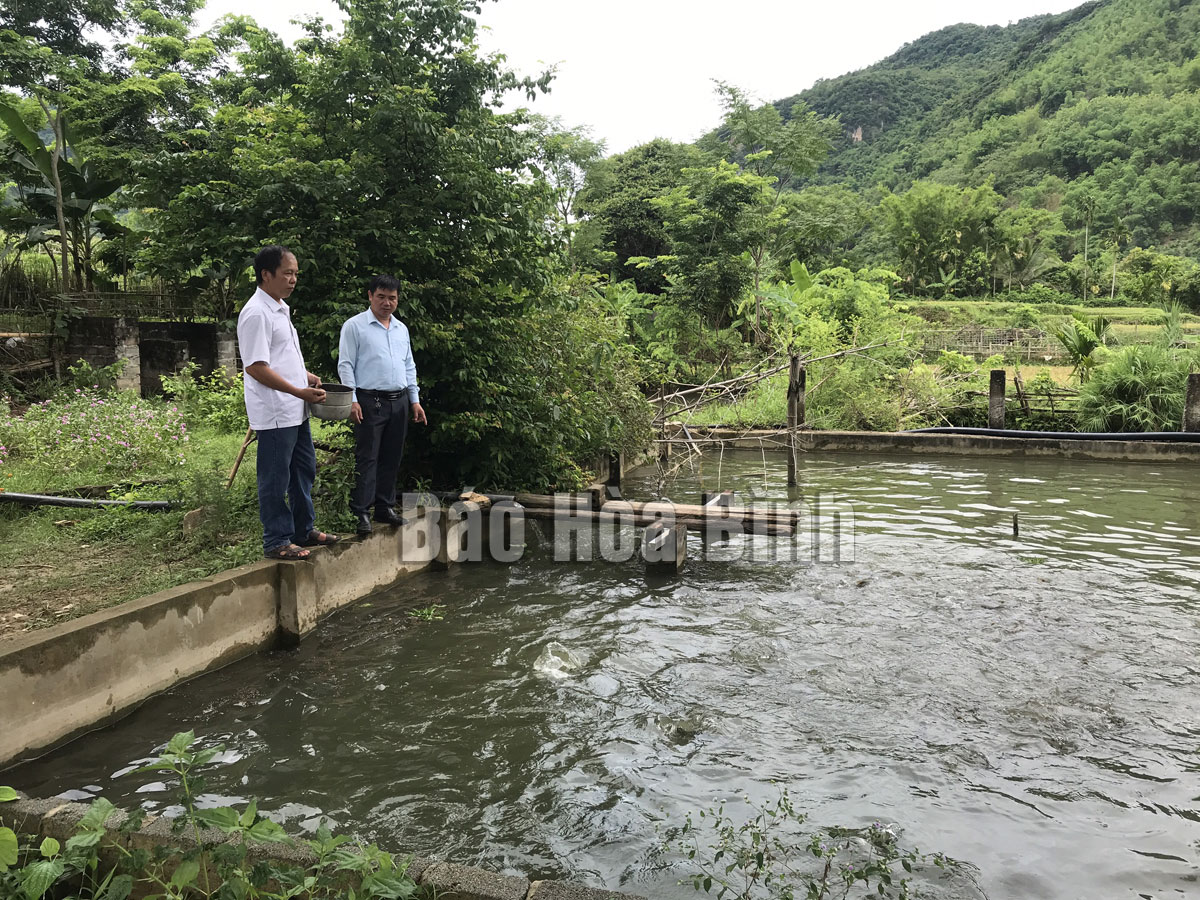(HBO) – The farming of "Dam xanh” fish, scientifically known as Bangana lemassoni, a specialty fish of Mai Chau district thanks to its delicious taste, has helped local residents in Van Mai commune improve their incomes.
"Dam xanh" fish farm of Luong Van An, a resident of Cu
village, Van Mai commune (Mai Chau district), has helped him earn 60-70 million
VND a year.
Luong Van An, a resident of Cu village who owns a 350-sq.m fish farm, said that
his family has been breeding "dam xanh" fish for a decade. Thanks to
good adaption with the environment, the fish develops strongly without any
considerable problem.
With his rich experience in farming and close watch on the growth of the fish,
the fish in his farm have grown healthily, ensuring good sales. Each "dam
xanh" crop takes three years. With the weight of 1.5-2kg each fish and the
price of 200-250,000VND per kilo, An earns 60-70 million VND (2,610-3,046 USD)
per year.
Sharing his fish farming experience, An said that the most important stage is
designing the farming model. "Dam xanh" is the cold-water fish that
develops best in the natural environment with continuous water flow, thus it is
necessary to combine intake and outtake water sources, he said.
Van Mai commune, with a dense network of rivers and streams, especially Ma
River, Sia and Mun streams with stable water flows, has good conditions to
develop "dam xanh" fish farming. With high resilience against
diseases and extreme weather conditions, "dam xanh" fish farming is
suitable to be expanded to many neighbouring localities with similar natural
conditions.
"Dam xanh" fish are mostly raised in Nghe, Long and Cum hamlets with
over 80 percent of households taking part, with a total area of 6.2 hectares.
The quality of the fish has received many positive feedbacks and evaluations
from the domestic and foreign markets thanks to delicious taste that is similar
to that of natural fish.
Heavier fish are sold at a higher price. A 3-3.5kg fish can be sold at
250,000-300,000 VND per kilo. The model of raising "dam xanh" fish
has been applied in the commune for a long time. In the commune, the smallest
farms have area of 100-200 sq.m, while biggest ones are 500-1,000sq.m. The
product has stable sales and market, as at the beginning of the crop, many
traders have ordered the fish. The product is sold in the district and many
hotels and restaurants in big cities.
Vi Van Truyen, Vice Chairman of the Van Mai People’s Committee, said that the
maintenance and expansion of "dam xanh" fish farms and the
improvement of the product’s quality have been added to the commune’s
resolution on socio-economic development with an aim to develop a key product
of the locality.
He said that the commune has supported local residents in boosting production
by implementing credit programmes, organising training courses to share
experience in fish farming, so that many local households have managed to get
rid of poverty. The model will be further expanded to build an OCOP product,
thus step by step making "dam xanh" an outstanding specialty of the
commune and district.
Currently, the per capita income of the commune is 32 million VND per year.



